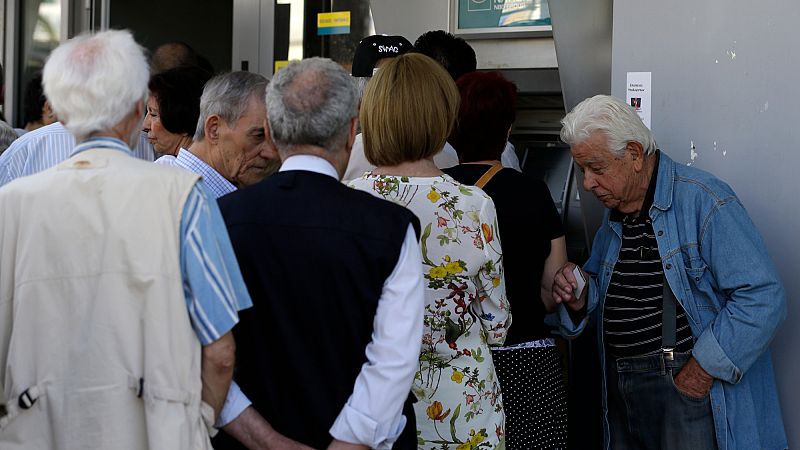
Pensions are the main source of income for older people in Europe, according to the OECD’s Pension at a Glance 2023 report. In many European countries, public transfers—such as state pensions and benefits—account for over 70% of older adults’ total equivalised gross household income, exceeding 80% in some cases.
So, how much do Europeans receive in old-age pensions? What is the average pension expenditure per beneficiary? And how do pension levels compare across Europe when adjusted for purchasing power?
According to Eurostat, in 2022, the average pension expenditure per beneficiary for old-age pensions was €16,138 in the EU. This equals approximately €1,345 per month when divided over 12 months.
Nordic countries lead with higher average pensions
It ranged from €3,611 in Bulgaria to €31,385 in Luxembourg within the EU. When EFTA and EU candidate countries are included, the range widens—from €1,648 in Albania to €35,959 in Iceland.
The average old-age pension per beneficiary also exceeded €30,000 in two Nordic countries: Norway and Denmark. It was also significantly above the EU average in Sweden (€22,436) and Finland (€21,085).
EU candidates have the lowest pensions
Besides Albania, EU candidate countries have the lowest average pensions. These include Turkey (€2,942), Bosnia and Herzegovina (€3,041), Serbia (€3,486), and Montenegro (€3,962). Montenegro ranks just above Bulgaria, but only by a small margin. These are annual figures, not monthly, demonstrating the wide gap between the lowest and highest pension levels in Europe.
The EU’s ‘Big Four’ economies ranked consecutively, all above the EU average. Italy had the highest average pension among them at €19,589, followed by France (€18,855), Spain (€18,100), and Germany (€17,926).
Wide gaps in pension levels across Europe
Average pension figures show that:
- There’s a strong East-West divide, with Western and Nordic Europe offering much higher pension benefits.
- The Southern European countries generally fare better than Eastern ones but still trail behind Northern Europe.
- The poorest performers are concentrated in the Balkans and Eastern EU, particularly among EU candidate countries.
Pension gaps narrow sharply in PPS terms
Inequalities in average pensions are significantly narrower when measured in purchasing power standards (PPS) compared to nominal terms.
For example, within the EU, the ratio between the highest and lowest average pension is 8.8 in nominal terms, but it drops to 3.5 in PPS, reflecting differences in living costs.
In the EU, average pension expenditure per beneficiary ranged from 5,978 PPS in Slovakia to 21,162 PPS in Austria.
When non-EU countries are included, Albania had the lowest figure at 3,019 PPS.
Turkey ranked significantly higher in PPS terms, with 8,128 PPS—placing it above several EU member states.
All Nordic countries are above the EU average in pension spending, with some ranking among the highest in Europe.
Pensions fell in three countries in 2022
In euro terms, the average pension fell in only three countries in 2022 compared to 2021—and by less than 5%. These were Turkey, Ireland, and Greece. In Turkey, the decline was primarily due to a sharp depreciation of the national currency, which affected the euro value of pensions.
In contrast, Bulgaria saw the largest increase at 33%, followed by Czechia with 16%. Pension growth also exceeded 10% in Latvia, Lithuania, Montenegro, and Romania.
Old-age pensions are periodic payments intended to i) maintain the income of the beneficiary after retirement from paid employment at the legal or standard age or ii) support the income of elderly people.
Is pension income enough to maintain living standards?
According to the 2024 Pension Adequacy Report, jointly prepared by the European Commission and the Social Protection Committee, EU countries are taking further steps to safeguard adequacy, but future adequacy remains under pressure. Pension replacement rates for a given career are projected to decline over the next four decades.
The risk of poverty and social exclusion among older people has continued to rise since 2019, mainly driven by increasing relative income poverty.
In 2022, more than one in five people aged 65 and over in the EU—about 18.5 million individuals—were at risk of poverty or social exclusion. This number is growing due to both the rising poverty rate and the ageing population.
Across much of Europe, pension income falls well below pre-retirement earnings. This gap makes it hard for many older adults to maintain their standard of living after they stop working.
Gender gap in pensions: Women receive significantly less
The report shows that older women face higher poverty risks than men in every EU country. On average, women in the EU receive 26.1% less pension income than men, and 5.3% of women receive no pension at all.
These gaps are rooted in gender pay disparities, shorter or interrupted careers, and a higher incidence of part-time work among women.







